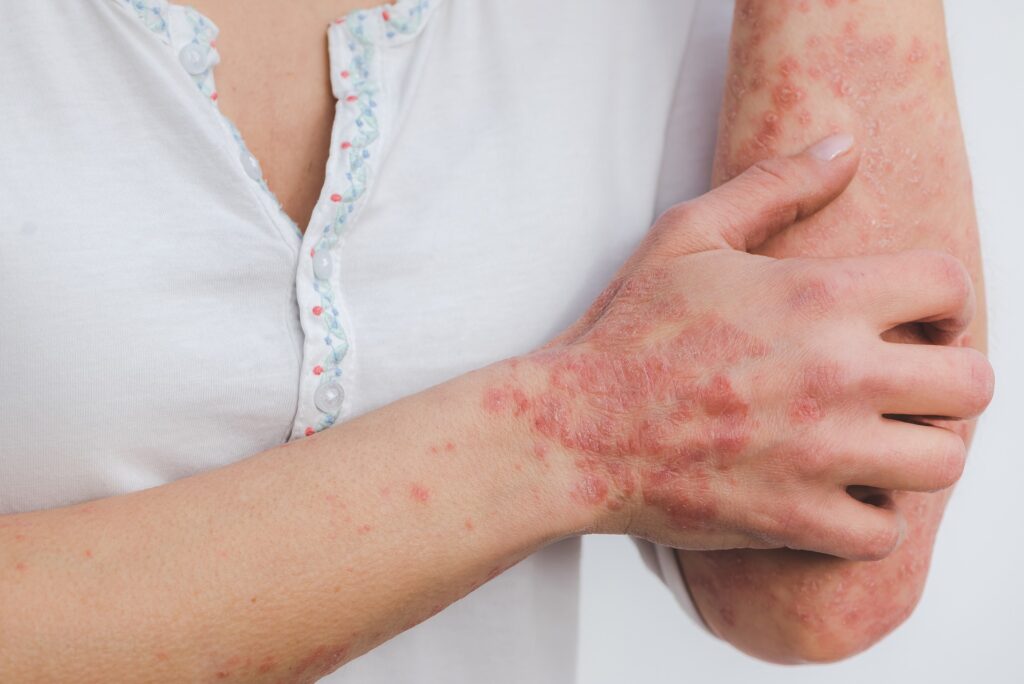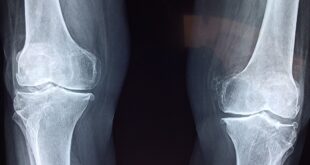Many people suffer from either eczema or psoriasis. Both skin ailments are itchy and appear to be rashes. Knowing the differences between the two can help determine the steps to minimize flare-ups.
Eczema or Atopic Dermatitis

This causes the skin to be itchy and red. It is a common condition in children, but it can affect anyone at any age. Eczema is a chronic skin issue.
It tends to flare up on occasion. Some people have it with hay fever or asthma. Studies show that there is still no cure for atopic dermatitis. But there are measures and treatments capable of relieving the symptoms. In addition, they can prevent future flare-ups.
Symptoms of Eczema
The symptoms of eczema vary from one person to the next. In some patients, there are red or brownish patches on the wrists, hands, neck, and feet. Others have these patches on the ankles, eyelids, upper chest. Some patients have them on the inside fold of the knees and elbows. Infants can have eczema on the scalp and face.
Dry skin and thickened scaly skin are also symptoms of eczema. There are also raised bumps on the skin that leak and crust over when the patient scratches it. The itchiness of the skin becomes more intense, especially during the evening. As a result, the skin becomes swollen, raw, and sensitive. The constant skin irritation causes the skin to crack, thicken, and become scaly.
Many patients start suffering from eczema before they reach 5 years old. This may still occur in adolescence and into adulthood. Some people have occasional attacks. Then, it clears up for months or even years.
Psoriasis

This skin condition manifests itself in the form of itchy, red, and scaly patches. Patients often have them on the scalp, knees, elbows, and trunk. Psoriasis is a chronic, incurable disease. There are cycles.
The attacks last for weeks or even months. The patches will disappear for a while and then come back again. Treatments are available to help the patient manage the symptoms. Lifestyle changes and coping techniques can help the patient manage psoriasis.
Symptoms of Psoriasis
Patients often have red patches of skin with silvery scales. The dry skin cracks and may also itch or bleed. The patient may also experience soreness, itching, and burning on the skin.
The patient’s nails become ridged, thickened, or pitted. Stiff and swollen joints may also accompany these symptoms. Children develop small spots with scales. Psoriasis rashes come in small spots of scaling to large eruptions on various areas of the face and body. Some rashes appear on the elbows, lower back, soles of the feet, and knees. Others get the patches on their palms, legs, and faces.
Types of Psoriasis
Many types of psoriasis can develop. Plaque psoriasis is the most common one and occurs in patches. This causes dry and raised scaly lesions. The formed plaques may be a few or many, tender or itchy. They appear on the scalp, elbows, knees, and lower back.
There is also nail psoriasis, which causes the nails to crumble. Guttate psoriasis develops because of a bacterial infection like strep throat. Inverse psoriasis affects the breasts, groin, and buttocks. Fungal infections tend to trigger it.
Pustular psoriasis has pus-filled rashes. A rare type of psoriasis is erythrodermic psoriasis. It can grow on the patient’s entire body. Psoriatic arthritis causes joint damage and stiffness.
The Difference Between the Two Skin Conditions
Kids tend to develop psoriasis and eczema. There are more occurrences of eczema than psoriasis, though. As shown earlier, psoriasis and eczema look and feel the same. Many parents cannot tell if their son or daughter has eczema. Doctors also tend to diagnose the lesions as eczema.
Eczema often develops on the crooks of the elbows and knees. Only trained dermatologists can see the subtle differences between these two conditions. Psoriasis shows up as thick, red, and scaly patches. These often occur in the elbows, face, and buttocks. Children tend to have psoriasis on their scalp.
Children with psoriasis have mild itching. Those with eczema experience intense itching. Even so, some children manifest symptoms that make it more challenging for doctors to distinguish between these two skin conditions. Children can also have both psoriasis and eczema.
Know the Difference to Improve Your Treatment
It can be difficult to tell if you have eczema or psoriasis. Most of the signs and symptoms of these two skin conditions can be similar. A child may have these two ailments at the same time without the parents even knowing about it. It is always important to seek the help of an experienced dermatologist in finalizing your diagnosis.


